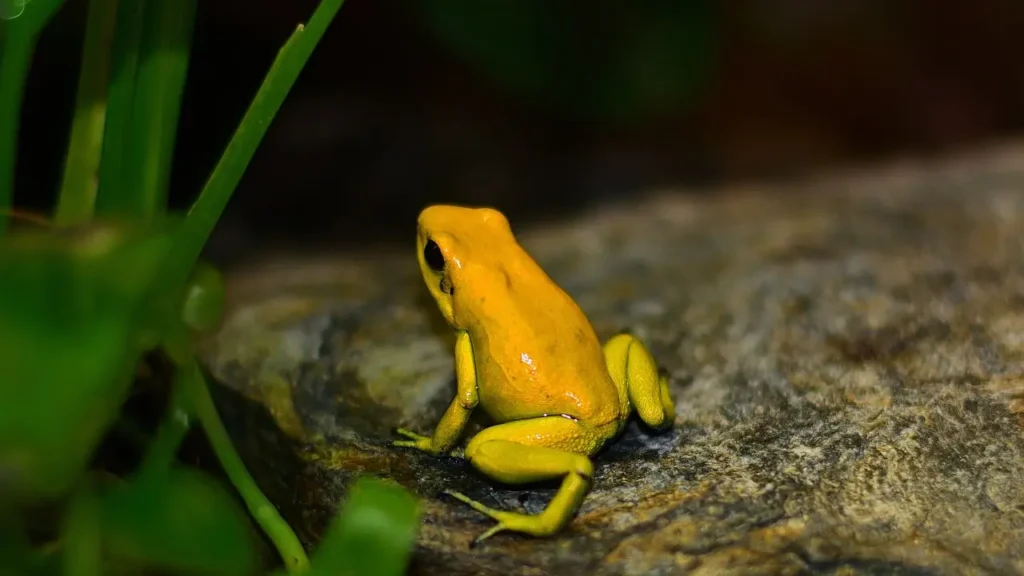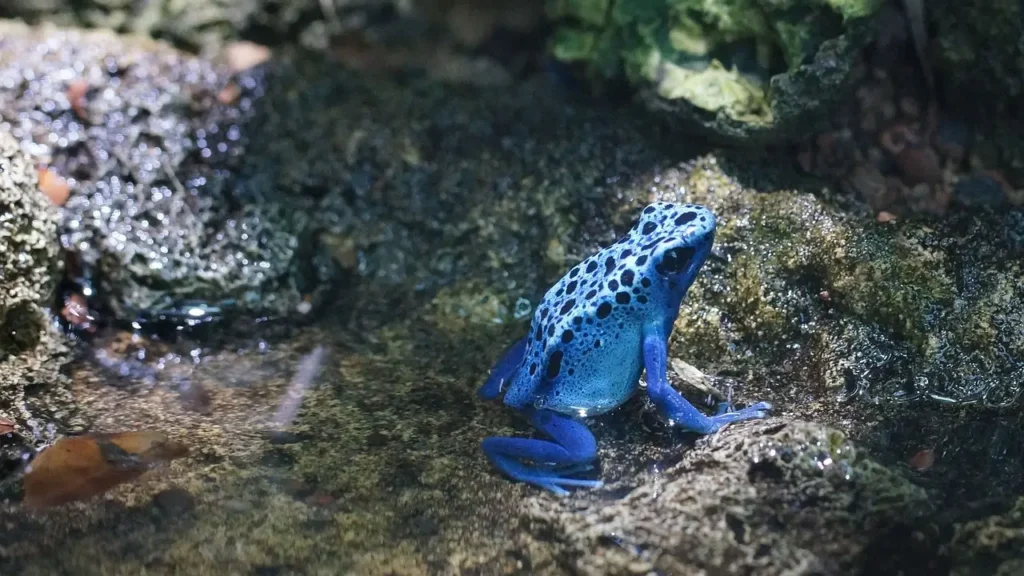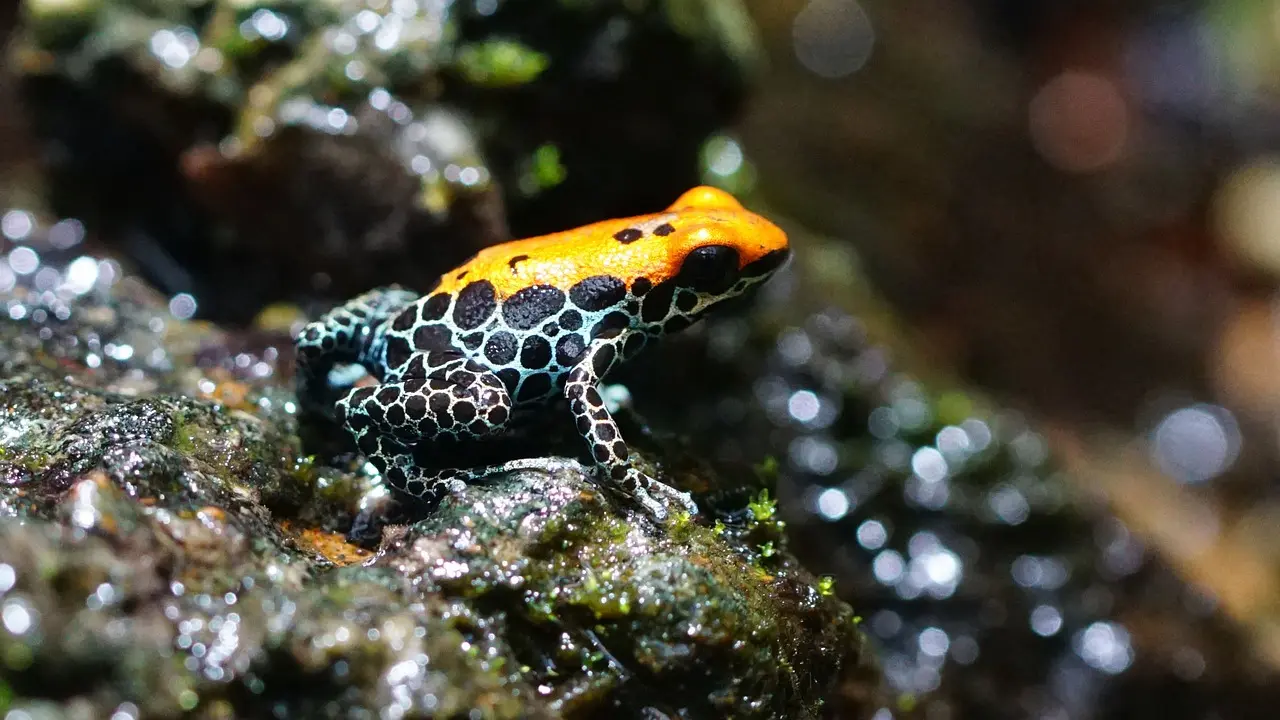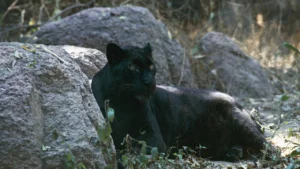Table of Contents
Introduction
In the lush rainforests of Central and South America, amidst a tapestry of vibrant foliage and cascading waterfalls, resides a creature of unparalleled beauty and intrigue the poison dart frog. With its striking colors and fascinating behaviors, this tiny amphibian has captured the fascination of enthusiasts and researchers alike. In this comprehensive guide, we’ll embark on a journey into the captivating world of poison dart frogs, exploring their habitat, unique adaptations, diverse species, and the important role they play in their ecosystems. Whether you’re a seasoned amphibian enthusiast or a curious pet owner, prepare to be enchanted by the allure of these exquisite creatures.
Unveiling the Poison Dart Frog
Let’s begin our exploration by uncovering the mysteries of the poison dart frog. Scientifically known as dendrobatids, these amphibians belong to the family Dendrobatidae and are renowned for their vibrant colors and toxic skin secretions. Found primarily in the rainforests of Central and South America, poison dart frogs come in a dazzling array of colors and patterns, ranging from bright reds and yellows to electric blues and greens.
Toxicity and Defense Mechanisms
One of the most fascinating aspects of poison dart frogs is their toxic skin secretions, which serve as a potent defense mechanism against predators. The toxins, known as alkaloids, are derived from the frogs’ diet of ants, beetles, and other arthropods. These toxins are sequestered in the frogs’ skin glands and are released when the frog feels threatened. While the level of toxicity varies among species, some poison dart frogs produce toxins potent enough to kill or incapacitate predators.
Distribution

Poison dart frogs are primarily found in the tropical rainforests of Central and South America, where they inhabit leaf litter, rotting logs, and other moist environments. They are most abundant in regions with high levels of humidity and rainfall, such as the Amazon Basin and the forests of Costa Rica and Panama. Despite their small size, poison dart frogs play a crucial role in their ecosystems as both predators and prey, contributing to the balance of insect populations and serving as indicators of environmental health.
Diversity of Species
The family Dendrobatidae encompasses a diverse array of species, with over 200 recognized taxa. These include both large-bodied species, such as the iconic golden poison frog (Phyllobates terribilis), and smaller species like the strawberry poison dart frog (Oophaga pumilio). Each species exhibits unique coloration, behavior, and habitat preferences, reflecting the rich biodiversity of the rainforests they inhabit.
Breeding Behavior and Parental Care
Poison dart frogs are known for their intricate breeding behavior and remarkable parental care. Males are often responsible for courtship displays, including vocalizations and elaborate mating dances, to attract females. Once a female selects a mate, the pair engages in complex courtship rituals, culminating in the deposition of eggs in moist, protected habitats such as leaf litter or bromeliad plants. Both parents play an active role in caring for the eggs and tadpoles, ensuring their survival until they undergo metamorphosis into froglets.
Conservation Status & Threats
Despite their captivating beauty, many species of poison dart frogs are threatened by habitat loss, pollution, and the illegal pet trade. Deforestation and habitat fragmentation pose significant threats to their survival, depriving them of essential breeding and foraging habitats. Additionally, pollution from agricultural runoff and pesticide use can contaminate water sources, negatively impacting frog populations. Furthermore, the demand for poison dart frogs in the pet trade has led to overexploitation of wild populations, further endangering their existence.
Conservation Efforts & Research
In response to the decline of poison dart frog populations, conservation organizations and researchers have implemented various initiatives to protect these iconic amphibians. These efforts include habitat conservation, captive breeding programs, community education, and scientific research aimed at understanding the ecology and behavior of poison dart frogs. By raising awareness about the importance of preserving rainforest habitats and combating illegal wildlife trade, conservationists strive to ensure the long-term survival of these exquisite creatures.
Ecological Role and Importance
Poison dart frogs play a vital role in maintaining the balance of their ecosystems. As predators, they help control insect populations, including ants, beetles, and termites, which can have significant ecological impacts on plant communities and other wildlife. By regulating insect populations, poison dart frogs contribute to the health and diversity of their habitats, making them important indicators of ecosystem stability.
Adaptations for Survival
In addition to their toxic skin secretions, poison dart frogs possess a range of adaptations that aid in their survival. These include bright coloration, which serves as a warning to potential predators of their toxicity. Some species also exhibit aposematic behavior, such as displaying their brightly colored underparts when threatened, to deter predators. Additionally, their small size and agile movements allow them to navigate the dense undergrowth of rainforest habitats with ease, avoiding predators and hunting for prey.
Communication and Social Behavior
Poison dart frogs communicate through a variety of vocalizations, including chirps, clicks, and trills. These vocalizations play a crucial role in courtship, territory defense, and establishing social hierarchies within their communities. Some species also engage in visual displays, such as aggressive posturing or territorial markings, to communicate with conspecifics. Social behavior varies among species, with some exhibiting solitary habits while others form small groups or colonies.
Cultural Significance

Poison dart frogs hold cultural significance for indigenous peoples of Central and South America, who have long revered these creatures for their beauty and potency. In some indigenous cultures, poison dart frogs are associated with myths, legends, and spiritual beliefs. Their toxic secretions have been used in traditional medicine and rituals for centuries, believed to possess medicinal properties and protective qualities. Today, poison dart frogs continue to inspire awe and reverence among people worldwide, serving as symbols of the natural world’s resilience and wonder.
Captive Husbandry & Pet Ownership
While poison dart frogs are captivating creatures, they require specialized care and attention in captivity. Due to their toxic skin secretions, proper handling is essential to avoid contact with their skin. Captive-bred specimens are preferred over wild-caught individuals to reduce the impact on wild populations. Enclosures should mimic their natural habitat, with ample hiding places, humidity, and temperature gradients. Feeding a varied diet of small insects, such as fruit flies, crickets, and springtails, ensures their nutritional needs are met.
Responsible Ownership and Conservation Advocacy
As with all exotic pets, responsible ownership of poison dart frogs is paramount to their well-being and conservation. Prospective owners should research the care requirements of these amphibians thoroughly and be prepared to provide a suitable environment for their needs. Additionally, supporting conservation organizations and initiatives dedicated to protecting poison dart frog habitats and wild populations is essential for their long-term survival. By raising awareness about the threats facing these creatures and advocating for their conservation, pet owners can play a vital role in safeguarding their future.
Future Prospects & Challenges
Looking ahead, the future of poison dart frogs depends on our collective efforts to address the threats they face and protect their habitats. Conservation measures, such as habitat preservation, sustainable land management, and community engagement, are crucial for ensuring their survival. Continued research into the ecology, behavior, and genetics of poison dart frogs will also provide valuable insights into their conservation needs and inform future conservation strategies. By working together to address the challenges confronting these remarkable amphibians, we can secure a brighter future for poison dart frogs and the ecosystems they inhabit.
Conclusion
Poison dart frogs are fascinating creatures that embody the beauty and complexity of tropical rainforests. From their vibrant colors and toxic skin secretions to their vital ecological role and cultural significance, these amphibians captivate the imagination and inspire awe. As stewards of our planet, it is our responsibility to protect and preserve the habitats of poison dart frogs and ensure their continued survival for generations to come. Through conservation efforts, responsible pet ownership, and advocacy, we can all contribute to the conservation of these enchanting creatures and the biodiversity of our planet.







